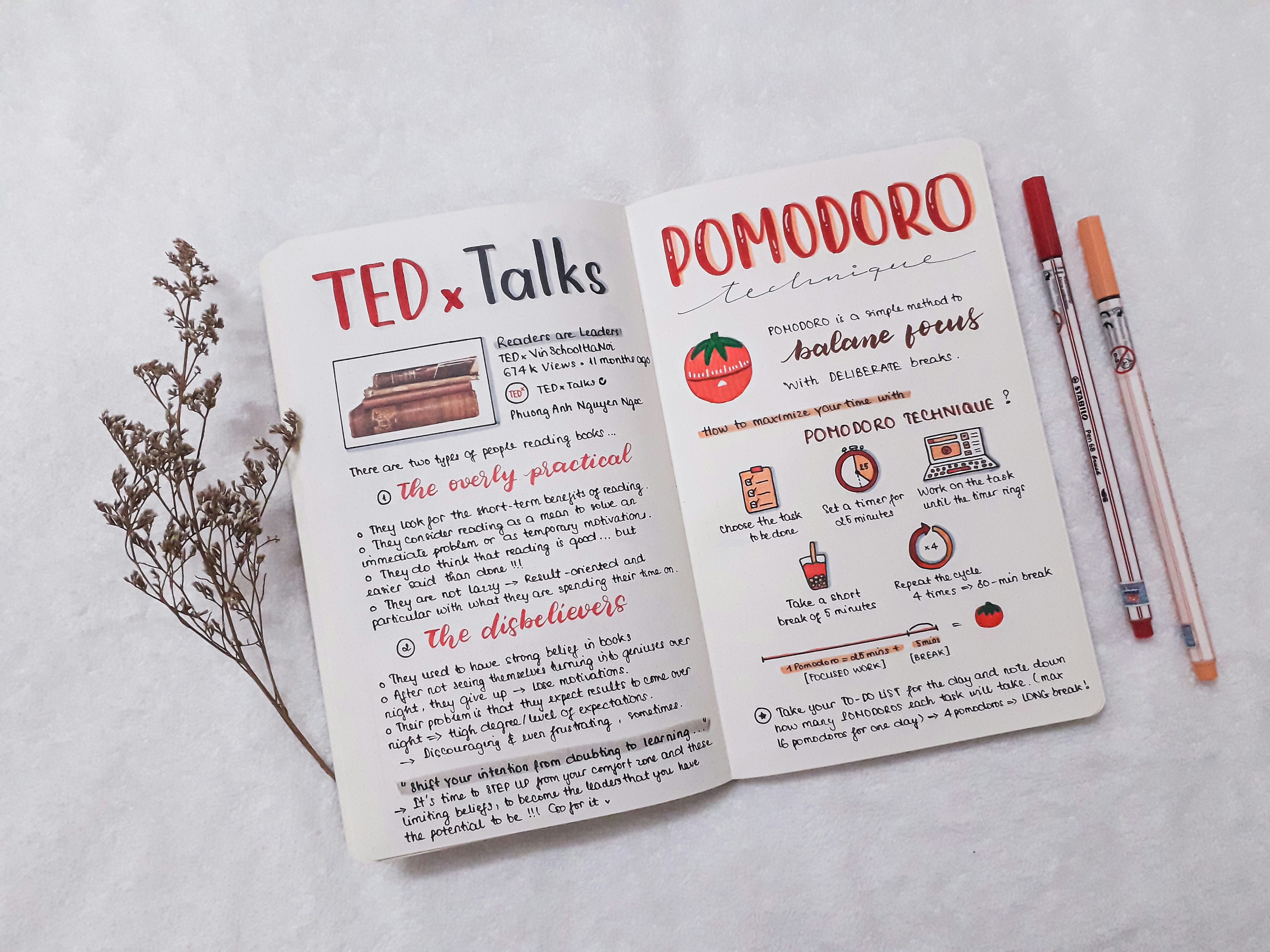I used to sit at my desk for eight straight hours, accomplishing roughly 90 minutes of actual work. The rest disappeared into the void of scrolling, coffee breaks, and staring vacantly at my screen pretending productivity would magically arrive.
Sound familiar?
The Pomodoro Technique transformed my workday – not because it’s revolutionary or complex, but because it’s refreshingly simple and acknowledges a fundamental truth: your brain isn’t designed to focus for hours on end.
Let’s cut through the productivity hype and focus on what actually works.
What is a Pomodoro anyway?
Pomodoro is Italian for “tomato,” named after those kitchen timers shaped like the fruit. In 1987, university student Francesco Cirillo created a deceptively simple system:
- Choose one task
- Set a timer for 25 minutes
- Work on ONLY that task until the timer rings
- Take a short 5-minute break
- Repeat four times, then take a longer 15-30 minute break
That’s it. No apps required. No subscriptions needed.
Within this simplicity lies its power. The technique works because it aligns with how your brain actually functions, not how you wish it would.
The Science Behind Why It Works
Your brain isn’t a machine. It’s an organic network that thrives on cycles rather than continuous output. Three fundamental principles make Pomodoro effective:
1. Parkinson’s Law
Work expands to fill the time available. Give yourself all day to write an email, and somehow it takes all day. Give yourself 25 minutes, and suddenly you’re focused and efficient.
2. Attention Restoration Theory
Research from the University of Illinois demonstrates that brief diversions dramatically improve your ability to focus on tasks for prolonged periods. Those 5-minute breaks aren’t just pleasant—they’re neurologically necessary.
3. The Zeigarnik Effect
Your brain has a persistent tendency to remember unfinished tasks better than completed ones. Time-boxing helps close those mental loops, reducing the cognitive weight of multiple open tasks.
When I started using Pomodoros, I discovered something revealing: I was only capable of about 6-8 solid Pomodoros daily—just 3-4 hours of actual, focused work.
The technique didn’t make me more productive—it exposed how little real work I was doing in the first place.
Adapting the Method to Your Needs
Myth #1: “The 25-minute interval is sacred”
Not true. The original technique uses 25 minutes because it worked for Cirillo. I’ve found 45-minute sessions with 10-minute breaks work better for deep creative work, while 15-minute intervals are perfect for administrative tasks I resist.
Experiment. Find your rhythm.
Myth #2: “You must stop immediately when the timer rings”
Sometimes you hit a flow state where ideas or solutions come effortlessly. Why interrupt that? If you’re in flow, ride it. The timer serves you, not the reverse.
Myth #3: “Pomodoro is for individual work only”
I’ve run entire team meetings using Pomodoro intervals: 25 minutes of focused discussion, 5 minutes of break. Everyone returns sharper, and meetings stop running over by default.
Implementing Without Overcomplicating
If you’re in the Apple ecosystem:
1. Zero-Friction Approach
- Simply use the built-in Timer app on your iPhone
- Voice command: “Hey Siri, set a timer for 25 minutes”
2. Slightly More Sophisticated Approach
- Use the free Be Focused app (iOS/macOS)
- Syncs across devices through iCloud
- Tracks your Pomodoro history without intrusion
3. Full Integration Approach
- Integrate with Apple Shortcuts to automatically:
- Turn on Do Not Disturb
- Close distracting apps
- Open project-related documents
- Track time in your task management app
For Android and Windows users, similar options exist with apps like Forest or Focus To-Do.
Advancing Your Practice
For creative professionals ready to maximize benefits:
- Plan your Pomodoros strategically
- Estimate how many Pomodoros each project requires
- Schedule them in blocks aligned with your energy peaks
- Leave buffer time—creative work expands unpredictably
- Track interruptions consciously
- External interruption? Note it, defer it respectfully, continue your focus
- Internal distraction? Acknowledge it, then gently return attention
- Review your patterns weekly to identify and address triggers
- Build your focus capacity gradually
- Most beginners struggle to complete even 4-6 focused Pomodoros daily
- After consistent practice, your capacity naturally increases
- Elite creative professionals can achieve 8-10 quality Pomodoros
When to Adapt the Approach
The technique isn’t universal. Consider modifications when:
- Your creative work demands extensive flow states
- Solution: Use longer intervals (50/10 instead of 25/5)
- Alternative: Use Pomodoro to initiate flow, then ride momentum
- Client work requires immediate availability
- Solution: Batch-process communications during specific breaks
- Alternative: Designate certain days for “interrupt-driven” work versus deep focus days
- You’re facing creative exhaustion
- Solution: Respect your limits—take a proper rest
- Better solution: Use Pomodoros to map energy patterns, then design your schedule accordingly
The Unexpected Transformations
After six months of consistent practice, I experienced surprising secondary benefits:
-
Enhanced creative estimation I developed an almost uncanny ability to predict how long creative projects would take.
-
Reduced decision fatigue The structure eliminated the constant “what should I work on now?” mental drain.
-
Improved professional boundaries “I have two more Pomodoros to complete” became a respected way to protect creative time.
Begin Today
The beauty of the Pomodoro Technique lies in its immediacy. You need no special tools or preparation.
- Choose one creative task you’ve been postponing
- Set a timer for 25 minutes
- Work with singular focus
- Take a genuine 5-minute break
- Repeat
“The difference between talking about creating and actually creating is often just a timer away.” Start now. Your most focused work awaits.
